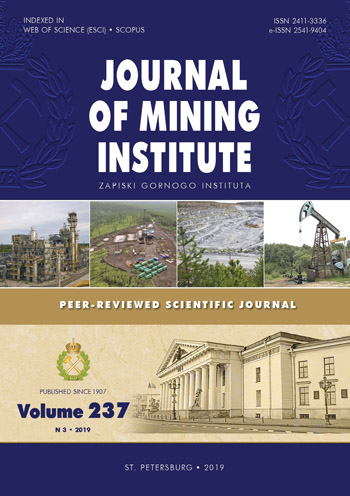Modern physicochemical equilibrium description in Na2O–Al2O3–H2O system and its analogues
- 1 — Ph.D., Dr.Sci. professor Saint-Petersburg Mining University
- 2 — Ph.D., Dr.Sci. professor Saint-Petersburg Mining University
- 3 — Ph.D., Dr.Sci. Head of department Saint-Petersburg Mining University
- 4 — Postgraduate student Saint-Petersburg Mining University
Abstract
Equilibrium and non-equilibrium states of systems Na2O–Al2O3–H2O and K2O–Al2O3–H2O are crucial for establishing key technological parameters in alumina production and their optimization. Due to a noticeable discrepancy between experimental results and thermodynamic calculations based on materials of individual researchers the necessity of systematization and statistical processing of equilibrium data in these systems to create a reliable base of their physicochemical state, analysis and mathematical modeling of phase equilibria is substantiated. The tendency to a decrease of the hydration degree of solid sodium aluminates with increasing temperature and the transition of systems from the steady state of gibbsite to equilibrium with boehmite is revealed. The paper contains approximating functions that provide high-precision description of equilibrium isotherms in technologically significant area of Na2O–Al2O3–H2O and K2O–Al2O3–H2O concentrations. Approximating function can be simplified by dividing the isotherm into two sections with the intervals of alkaline content 0-0.25 and 0.25-0.4 mole/100 g of solution. The differences in solubility isotherms for Na2O–Al2O3–H2O and K2O–Al2O3–H2O systems provide are associated with changes in the ionic composition solutions that depends on concentration and temperature, as well as differences connecting with alkali cation hydration, which is crucially important for thermodynamic modeling of equilibria under consideration.
Funding
The study has been carried out with financial support from the Russian Science Foundation under the Agreement N18-19-00577 from 26.04.2018 on grant allocation for basic and exploratory scientific research
